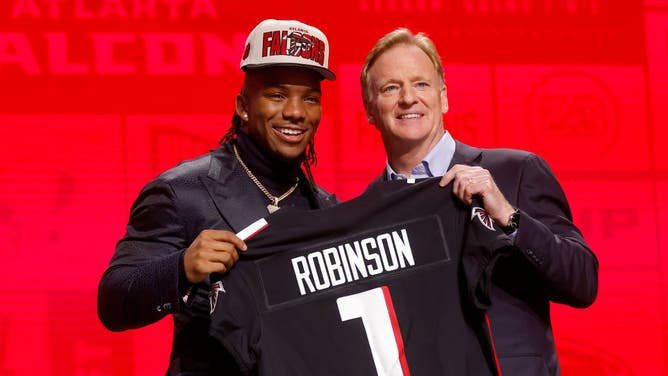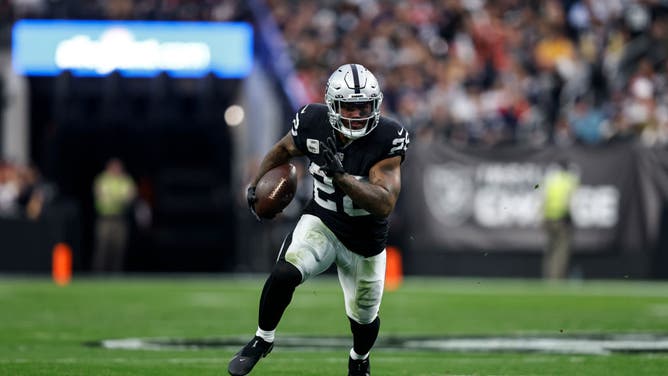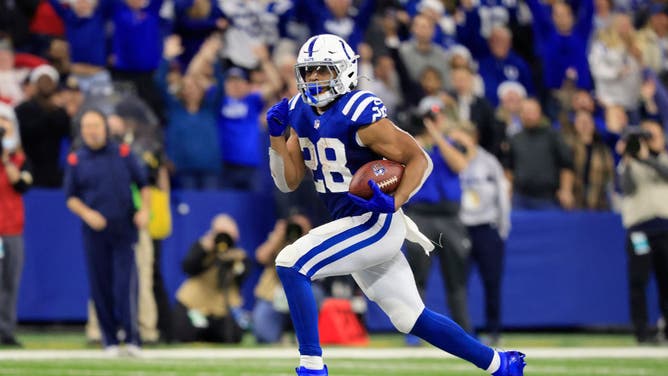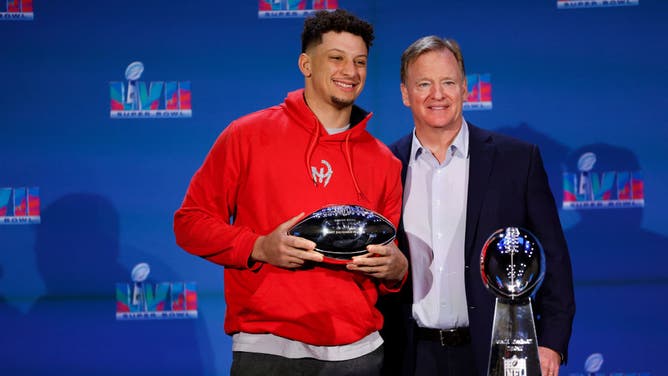NFL Front Offices Seem To Think Productive RBs Are Easy To Find, But The Stats From Recent Seasons Say Otherwise
A major discussion around the NFL right now revolves around the value of running backs. Teams don't want to spend money on RBs because they don't have a long shelf life. And, prior to this season, teams started shying away from using high draft capital on them.
In this year's NFL Draft, the Atlanta Falcons selected Bijan Robinson at #8. The Detroit Lions picked Jahmyr Gibbs 12th. Many, myself included, questioned using first-round selections on running backs.
Now, to be fair to me, I suggested that teams who have many holes to fill shouldn't use those picks on running backs. That wasn't to say that Robinson or Gibbs aren't first-round talents.

Running back Bijan Robinson poses with NFL Commissioner Roger Goodell after being selected eighth overall by the Atlanta Falcons during the first round of the 2023 NFL Draft. (Photo by David Eulitt/Getty Images)
No team took a running back in the first round of 2022 NFL Draft.
I decided to dig into rushing statistics over the past few seasons to see if that idea held up. And, to be honest, the results stunned me a bit.
I held a similar bias that running backs can come from anywhere and be productive. The idea that players like Phillip Lindsay -- who went from UDFA to 1,000-yard rusher -- are quite common.
But they aren't all that common.
Let's take a look at the top rushers in 2022. Josh Jacobs led the NFL in rushing yards. The Raiders selected Jacobs in the first round of the 2019 NFL Draft. Derrick Henry came next, followed by Nick Chubb. Both Henry and Chubb went in the second round of the NFL Draft, within the Top 50 picks.

Running back Josh Jacobs, a former first-round pick, led the NFL in rushing yards last season. (Photo by Michael Owens/Getty Images)
In fact, all eight of the top rushers (quarterbacks excluded) came from either the first or second round. The latest any of the top rushers went in the NFL Draft was Miles Sanders at 53rd overall.
Perhaps an outlier year? Not exactly. 2021 looks quite similar.
Jonathan Taylor, a second round pick at 41st overall, led the NFL in rushing yards. Nick Chubb finished second with Joe Mixon third. The Cincinnati Bengals selected Mixon in the second round of the 2017 NFL Draft at 48th overall.
After that trio, Najee Harris finished fourth in rushing (first round pick) and then Dalvin Cook (second round).
Antonio Gibson finished sixth, and he was a third-round pick but still in the Top 70 selections. Then Ezekiel Elliott, the #4 overall pick in 2016.
Of the top 11 rushing leaders in 2021, only Elijah Mitchell (sixth round) came off the board after the third round.

Running back Jonathan Taylor, a former second-round pick, led the NFL in rushing in 2021. (Photo by Justin Casterline/Getty Images)
How about 2020? Very similar story, again. Only Aaron Jones (fifth round) and James Robinson (UDFA) finished in the Top 10 in rushing among running backs with a draft selection beyond the third round.
In 2019? Only Chris Carson finished in the Top 9 in rushing yards among running backs and was drafted outside the third round.
So, clearly, running backs aren't quite as dime-a-dozen as conventional wisdom might say.
Now, there's a credible argument that teams don't need a top rusher to be successful. And, that's partially true. Most of the recent Super Bowl winners did not invest high NFL Draft capital in running backs.
But, most had an elite quarterback.

Elite running backs are nice to have for NFL teams, but they'd rather have Patrick Mahomes. (Photo by Carmen Mandato/Getty Images)
The point here is to simply dispel the notion that any player can be a successful running back given the right system. Some succeed, sure. But that's true of virtually every position. Wide receivers can be successful thanks to a great quarterback.
Even some quarterbacks benefit greatly from the system and team around them. But elite talent is elite talent.
And if a team wants an elite-level running back, they are going to have to invest some capital to obtain him.
Just like every other position on the field.